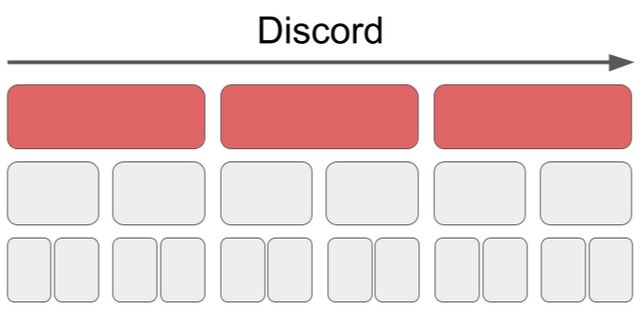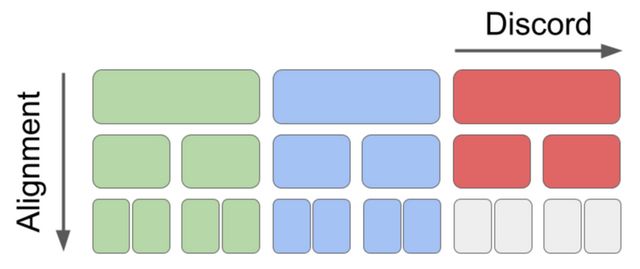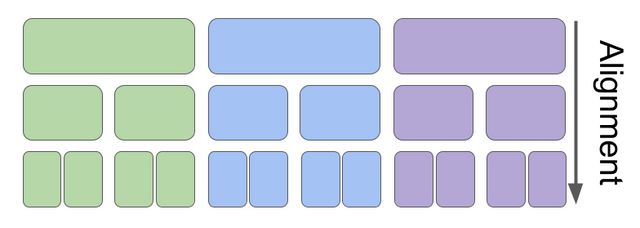Disagree horizontally, align vertically
I’m re-reading The Manager’s Path by Camille Fournier and one of the things that caught my eye is “the cone of silence”. It states that disagreements that happen in the context of a leadership team don't exist to the wider team.
Fournier talks about a leadership team, but I see the value in following this behaviour at all levels of management. We should all feel safe to disagree with our peers and our manager, but once a decision is made it's our responsibility to build alignment throughout our part of the org.
Your First Team
Before diving in, I wanted to briefly explain the “First Team” concept. I was introduced to it by Patrick Lencioni in “The Five Dysfunctions of a Team”, which is worth a read if you want to grow in to an executive role.
In the book, Lencioni states that you can only have one team that you put first when making decisions. You may be surprised to hear that this isn't the org that you support. Your first team are your peers. They are the people you need to support first and foremost.
Building Consensus
All of the examples in this section are fictitious and designed to illustrate a point.
Disagreements happen at all levels of a business. The more senior you are, the more impactful the disagreements tend to be. Fundamental misalignment between executive functions in a business leads to thrashing (and usually poor performance).
Sometimes this happens and there’s nothing that you can do. For example, if your chief product officer (CPO) is building a SaaS-only product but your chief marketing officer (CMO) is convinced that government is your biggest target vertical, thing aren’t going to go well. In this instance the two teams have competing incentives and there is no way to align.
Most disagreements aren’t fundamentally misaligned though. Imagine the CPO wants to ship 6 new features in the next 6 months, and the chief technology officer (CTO) wants to focus on robustness and stability. There is definitely disagreement on the best course of action, and there will likely be a negotiation that results in the business shipping 4 new features and spending 30% of their time on robustness.
An inexperienced CTO is likely to go back to their teams and say “I fought for you all, but the CPO wouldn’t budge! I managed to get you 30% time to fix all the debt we’ve incurred”. At the same time, the CPO is saying “Sorry all, our CTO said they can’t deliver what we need so we need to cut two features”. This leads to an “us vs them” culture within the org.
Any disagreements with your first team should stay within the first team. Share your opinions. Discuss the pros and cons of each approach. Understand the trade offs that need to be made. Then at the end of the day you’ll either reach consensus or have to disagree and commit. This is when the real work starts.
Ideally we’d build products with 100% uptime, every feature our customers need and support deployment topologies that work for both SaaS and on-premise customers. Unfortunately, there’s not enough time to do everything.
What happens is that each org prioritises their own goals:
- Product does some customer discovery with government companies with a view to making the SaaS platform accessible to regulated industries. This might include understanding required certifications etc.
- Marketing focuses on platform capabilities that benefit government companies the most, but produce content in a way that can be used for both SaaS and on-premise sales development
- Engineering build the four new features, but do so in such a way that they’re a little more robust than they historically would have been. This adds 20% to the original estimate, but everyone gets what they wanted.
A United Front
It doesn’t matter if you’ve opted to disagree and commit at a higher level. As a leader, it’s your responsibility to present a united front with your peers to your part of the organisation.
Discord and alignment come in cycles. Most discussions start with disagreement:

Once that group of peers reach consensus (or disagree and commit) the decision is communicated downwards as a united front:

Some teams will be immediately aligned, but sometimes there will be discord within a group. This disagreement must stay between the first team of the next level until a decision is made:

At which point the whole org is committed to doing what's been agreed:

No matter where the disagreement occurs, it's your responsibility to build alignment within your org.
As a CPO, talk about how increased robustness instills confidence in the company from our customers, even if you fought tooth and nail for more feature development. As a CTO, talk about how a platform that has 100% uptime is useless if no-one’s using it. Your responsibility is to help your org see other perspectives.
As a CMO talk about the reduced customer acquisition cost for SaaS customers. As a CPO talk about the customer discovery we can do with government customers to help serve other regulated environments such as finance and telecoms.
Your responsibility is to disagree horizontally and build alignment vertically in order to build a stronger business.
Building a Better Company
This system of checks and balances is what makes a company successful. Assuming that everyone is working towards building a better company (and if they’re not, you have bigger problems) then working on a combination of needs provides a well rounded product.
But remember the golden rule:
Disagreements that happen in the context of the leadership team don't exist to the wider team